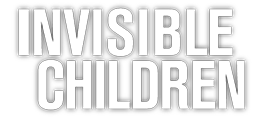 Arizona (news article) saw caseloads skyrocket when other states were shrinking. Abused children were being investigated after a ten day wait (backlog) and spent months more in the system before being reunited with family or placed in permanent homes. What most folks are not aware of, is that this means more trauma for children. Torture as defined by the World Health Organization is “extended exposure to violence and deprivation” and is what I found true in all the cases I worked as a volunteer Hennepin County guardian ad-Litem.
Arizona (news article) saw caseloads skyrocket when other states were shrinking. Abused children were being investigated after a ten day wait (backlog) and spent months more in the system before being reunited with family or placed in permanent homes. What most folks are not aware of, is that this means more trauma for children. Torture as defined by the World Health Organization is “extended exposure to violence and deprivation” and is what I found true in all the cases I worked as a volunteer Hennepin County guardian ad-Litem.
In Arizona the state refused to add capacity and failed to investigate 6500 cases. Abused and neglected children paid the price and Arizona will pay the price as those troubled children age and become part of the community. It is far cheaper (and a better investment) to build children than it is to fix adults.
Analysis shows soaring Arizona abuse caseloads
By: Bob Christie, Associated Press March 17, 2014 , 10:09 am
 A new analysis presented Friday to members of the Legislature’s Child Protective Services oversight committee shows Arizona’s child welfare system experienced a greater caseload increase than all but one state in the 10 years ending in 2012, while most states saw decreases.
A new analysis presented Friday to members of the Legislature’s Child Protective Services oversight committee shows Arizona’s child welfare system experienced a greater caseload increase than all but one state in the 10 years ending in 2012, while most states saw decreases.
University of Chicago researcher and former federal child welfare commissioner Bryan Samuels’ review of state and federal data also found the response time in Arizona for child abuse and neglect complaints soared from 63 hours to nearly 250 hours between 2009 and 2012.
Samuels said the data he reviewed at the request of state officials working to overhaul the broken system showed Arizona’s child welfare system became overwhelmed as caseloads soared. That led to a large increase in the amount of time children were in the system before being reunified with their families or placed in permanent homes.
“The big finding here is that as the system has grown in size, it has struggled to move children who would otherwise have moved out of the system when it was less busy out of the system,” Samuels said. “So you have fewer children exiting and when they exit, they exit having been in the system longer than they would have been before.
That means abused children are more traumatized face longer periods of instability, he said.
The findings show Arizona’s system is beyond capacity, and state officials will have to either add that capacity or come up with new strategies to lower caseloads.
Samuels said the analysis suggests Arizona didn’t adopt strategies to lower caseloads, including preventative care early on that would prevent removals, better analysis of incoming reports to limit removals and follow-up care. States that did that saw better results.
The findings about high caseloads were no surprise to the oversight committee, created in 2012 to focus on fixing the system. That charge became more urgent when more than 6,500 uninvestigated abuse and neglect reports were revealed in November.
Gov. Jan Brewer ordered CPS pulled from its parent agency in January and created a Cabinet-level post to oversee it. A panel she created that includes lawmakers, the head of the new agency, Brewer’s chief of staff and others are working on legislation to make that executive order permanent and have been gathering information.
What did surprise even Charles Flanagan, chosen by Brewer to lead the agency, is that the data Samuels presented even existed.
“I didn’t know that we had access to this before this day,” Flanagan said, noting the reports Arizona has been producing don’t allow adequate tracking of performance or outcomes that Samuels’ work provides.
The separate working group that has been meeting to rewrite the CPS laws expects to produce final legislation by May 1.
“As you can tell we’re digging in to all the different parts of the process in CPS and child protection that have been brought up as problematic,” said Sen. Nancy Barto, R-Phoenix, who sits on the oversight committee and the CPS reform group writing the new law. “It’s going to take time. The draft is really rough.”
Rep. Kate Brophy McGee, another member of both committees, said she’s looking at relatively minor changes so the system isn’t shocked. She said the current agency hasn’t been following existing state law and relies on poorly written and followed rules.



